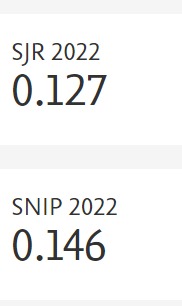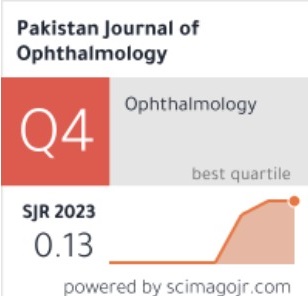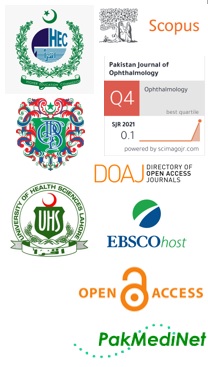Comparison of Endonasal Endoscopic Dacryocystorhinostomy with External Dacryocystorhinostomy
Doi: 10.36351/pjo.v37i3.1226
DOI:
https://doi.org/10.36351/pjo.v37i3.1226Keywords:
Conjunctivitis, Dacryocystorhinostomy, Dacryocystitis, Epiphora.Abstract
Purpose: To compare anatomical and functional success of Endonasal Dacryocystorhinostomy (DCR) with that of External Dacryocystorhinostomy.
Study Design: Quasi-experimental study.
Place and Duration of Study: Department of Ophthalmology and Otolaryngology, District Headquarter Teaching Hospital, Sahiwal, from July 2018 to July 2019.
Methods: Sixty patients with nasolacrimal duct obstruction were selected by convenient sampling technique and were divided into two groups. Group 1 underwent endonasal DCR while group 2 underwent external DCR. Detailed history with regard to symptoms and duration of the obstruction was taken. Detailed ophthalmological and otolaryngological examination was performed. Patients were followed up for three months. Chi-square test was used to compare the success between two groups. Confidence level of 95% was used and p value of less than 0.05 was considered significant.
Results: Male to female ratio was 4:11. The most common presenting symptoms was epiphora that was present in all patients. Regurgitation of lacrimal sac was present in 75%, conjunctivitis was present in 53.33% and dacryocystitis was present in 41.66% patients. Anatomical success rate for endonasal DCR was 25 (83.33%) and for external DCR was 27 (90%). Functional success rate for endonasal DCR was 23 (76.67%) and for external DCR was 22 (73.33%). There was no statistically significant difference in the short term success of surgery between the two groups.
Conclusion: Endonasal DCR offers minimal invasive approach with comparable anatomical and functional results to the external DCR.
Key Words: Conjunctivitis, Dacryocystorhinostomy, Dacryocystitis, Epiphora.






